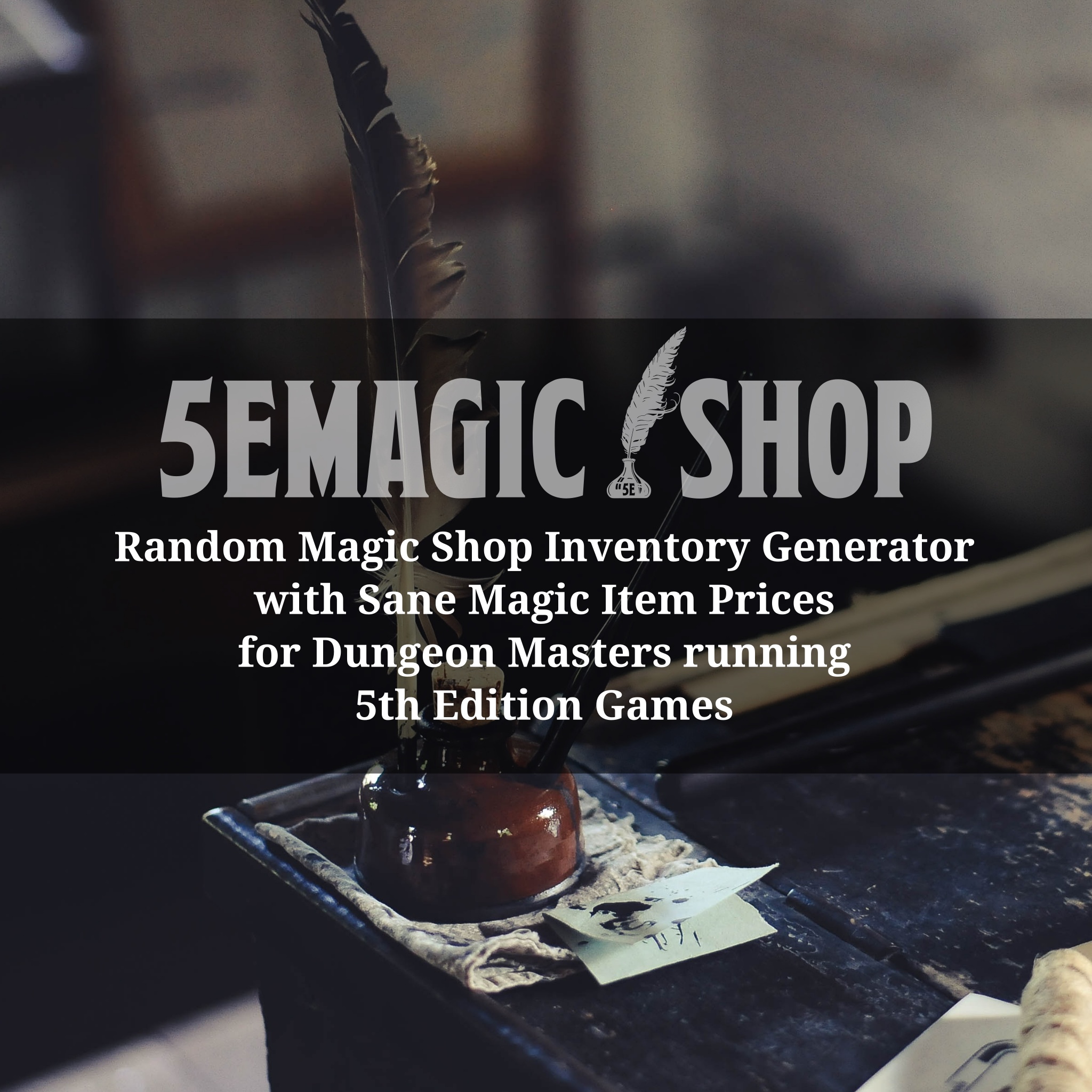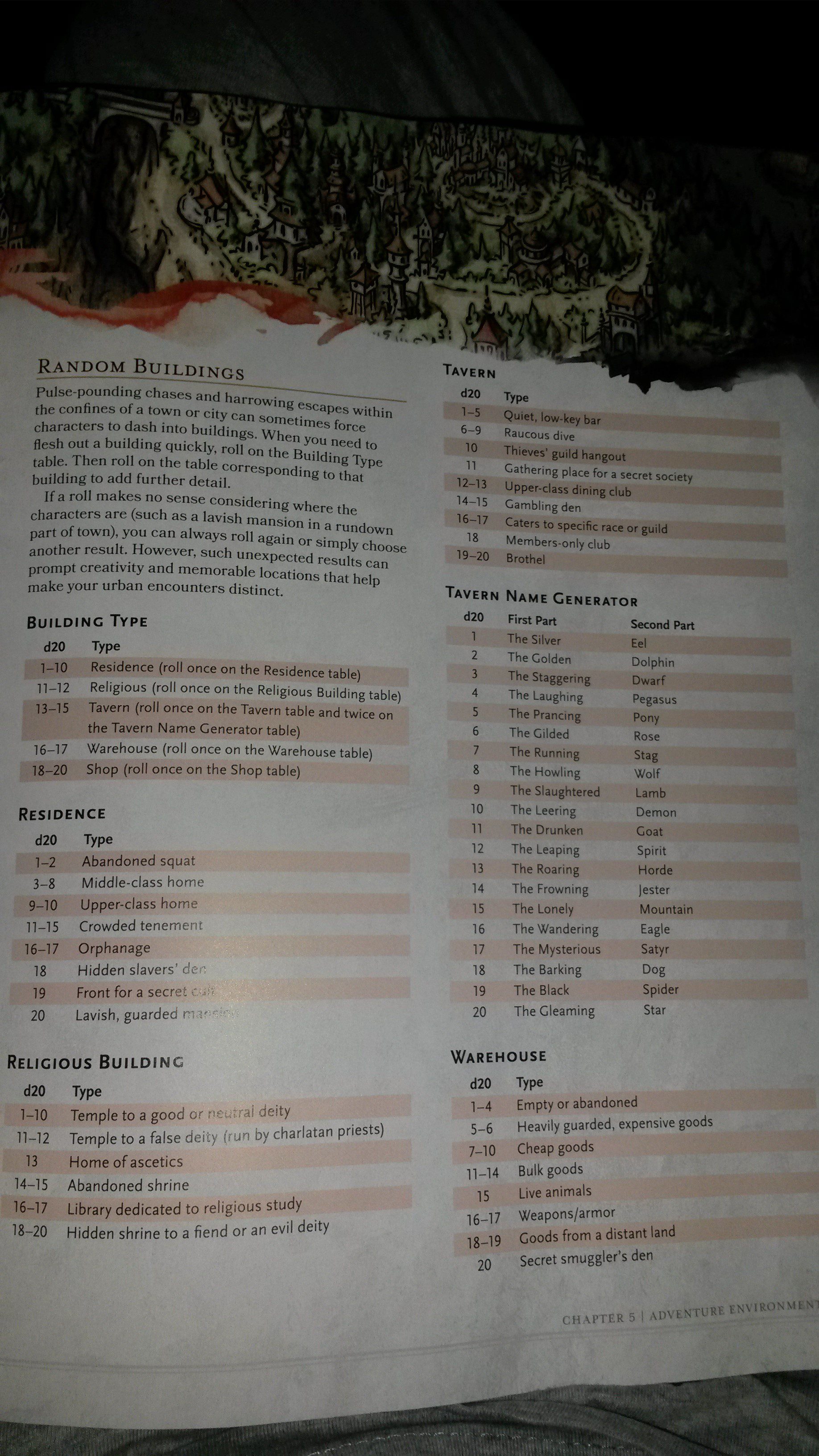Dungeons and Dragons (D&D) Fifth Edition (5e) Magic Items. A comprehensive list of all official magic items for Fifth Edition. Dungeons and Dragons (D&D) Fifth Edition (5e) Magic Items. A comprehensive list of all official magic items for Fifth Edition.
The idea is that any magic item should have some additional magical quality to make it unique. This is fitting with the 5E assumption that magic items should be relatively rare.
I like the idea of using these. But admittedly, I haven't really done it.
The list is too brief really. I've been going through my 4E adventurers vault looking for additional properties that I might apply. The frustrating thing about the 4E books is that they didn't include any tables to randomize. I agree that you should choose items that make sense in context, instead of taking one at random. But 'roll until you find one that fits' is a good approach, and sometimes the random result can spark an idea that grows into something more.
Magic Items are gleaned from the hoards of conquered Monsters or discovered in long-lost vaults. Such items grant capabilities a character could rarely have otherwise, or they complement their owner’s capabilities in wondrous ways.
Nov 02, 2015 As far as point three, this is a serious concern for adventurers. In 5e, characters can only have three magic items attuned at a time (DMG pg 138). Therefore, unlike 4e, the number of magic item slots available to characters are very limited and magic items must be carefully considered. A comprehensive list of all official magic items for Fifth Edition. Dungeons and Dragons (D&D) Fifth Edition (5e) Magic Items. This site works best with JavaScript enabled.
Attunement
D&d 5e Magic Item Cost Table
Some Magic Items require a creature to form a bond with them before their magical properties can be used. This bond is called attunement, and certain items have a prerequisite for it. If the prerequisite is a class, a creature must be a member of that class to attune to the item. (If the class is a Spellcasting class, a monster qualifies if it has Spell Slots and uses that class’s spell list.) If the prerequisite is to be a spellcaster, a creature qualifies if it can cast at least one spell using its traits or features, not using a magic item or the like.
Without becoming attuned to an item that requires attunement, a creature gains only its nonmagical benefits, unless its description states otherwise. For example, a magic Shield that requires attunement provides the benefits of a normal Shield to a creature not attuned to it, but none of its magical properties.
Attuning to an item requires a creature to spend a Short Rest focused on only that item while being in physical contact with it (this can’t be the same short rest used to learn the item’s properties). This focus can take the form of weapon practice (for a weapon), meditation (for a wondrous item), or some other appropriate activity. If the Short Rest is interrupted, the attunement attempt fails. Otherwise, at the end of the Short Rest, the creature gains an intuitive understanding of how to activate any magical properties of the item, including any necessary Command words.
An item can be attuned to only one creature at a time, and a creature can be attuned to no more than three Magic Items at a time. Any attempt to attune to a fourth item fails; the creature must end its attunement to an item first. Additionally, a creature can’t attune to more than one copy of an item. For example, a creature can’t attune to more than one Ring of Protection at a time.
A creature’s attunement to an item ends if the creature no longer satisfies the Prerequisites for attunement, if the item has been more than 100 feet away for at least 24 hours, if the creature dies, or if another creature attunes to the item. A creature can also voluntarily end attunement by spending another Short Rest focused on the item, unless the item is Cursed.
Wearing and Wielding Items
Using a magic item’s properties might mean wearing or wielding it. A magic item meant to be worn must be donned in the intended fashion: boots go on the feet, gloves on the hands, hats and helmets on the head, and rings on the finger. Magic armor must be donned, a Shield strapped to the arm, a cloak fastened about the shoulders. A weapon must be held.
In most cases, a magic item that’s meant to be worn can fit a creature regardless of size or build. Many magic garments are made to be easily adjustable, or they magically adjust themselves to the wearer. Rare exceptions exist. If the story suggests a good reason for an item to fit only creatures of a certain size or shape, you can rule that it doesn’t adjust. For example, drow-made armor might fit elves only. Dwarves might make items usable only by dwarf-sized and dwarf-shaped folk.
When a nonhumanoid tries to wear an item, use your discretion as to whether the item functions as intended. A ring placed on a tentacle might work, but a Yuan-ti with a snakelike tail instead of legs can’t wear boots.
Multiple Items of the Same Kind
Use Common sense to determine whether more than one of a given kind of magic item can be worn. A character can’t normally wear more than one pair of footwear, one pair of gloves or gauntlets, one pair of bracers, one suit of armor, one item of headwear, and one cloak. You can make exceptions; a character might be able to wear a circlet under a helmet, for example, or to layer two cloaks.
Paired Items
Items that come in pairs—such as boots, bracers, gauntlets, and gloves—impart their benefits only if both items of the pair are worn. For example, a character wearing a boot of striding and springing on one foot and a boot of elvenkind on the other foot gains no benefit from either.
Activating an Item
Activating some Magic Items requires a user to do something Special, such as holding the item and uttering a Command word. The description of each item category or individual item details how an item is activated. Certain items use the following rules for their activation.
If an item requires an action to activate, that action isn’t a function of the Use an Item action, so a feature such as the rogue’s Fast Hands can’t be used to activate the item.
Command Word

Dnd 5e Magic Items Table
A Command word is a word or phrase that must be spoken for an item to work. A magic item that requires a Command word can’t be activated in an area where sound is prevented, as in the area of the Silence spell.
Consumables
Some items are used up when they are activated. A potion or an elixir must be swallowed, or an oil applied to the body. The writing vanishes from a scroll when it is read. Once used, a consumable item loses its magic.

Some Magic Items allow the user to Cast a Spell from the item. The spell is cast at the lowest possible spell level, doesn’t expend any of the user’s Spell Slots, and requires no Components, unless the item’s description says otherwise. The spell uses its normal Casting Time, range, and Duration, and the user of the item must concentrate if the spell requires Concentration. Many items, such as potions, bypass the casting of a spell and confer the spell’s Effects, with their usual Duration. Certain items make exceptions to these rules, changing the Casting Time, Duration, or other parts of a spell.
magic item, such as certain staffs, may require you to use your own Spellcasting Ability when you Cast a Spell from the item. If you have more than one Spellcasting Ability, you choose which one to use with the item. If you don’t have a Spellcasting ability—perhaps you’re a rogue with the Use Magic Device feature—your Spellcasting Ability modifier is +0 for the item, and your Proficiency Bonus does apply.
Charges
Some Magic Items have charges that must be expended to activate their properties. The number of charges an item has remaining is revealed when an Identify spell is cast on it, as well as when a creature attunes to it. Additionally, when an item regains charges, the creature attuned to it learns how many charges it regained.